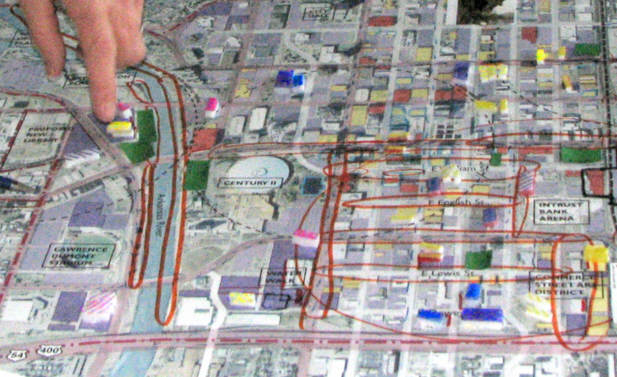|
|||||||||||||
|
|
|
|
|
|
|
|
|
|
|
|
|
|
|
|
|
|
|
|
|
|
|
|
|
|
|
|
|
Background |
|
|
|
|
The CHARETTE, Feb.28, 2010
A "public input" event, and its findings.
Thursday, Feb. 25, and Saturday, Feb.28, the City of Wichita and its downtown developers, consultants, and "movers-and-shakers," joined forces for their main "public input" events -- to give the general public a chance to evaluate and recommend ideas for the redevelopment of Downtown Wichita.
Here's the week in review (click a topic for details)...
-
Thursday, Feb. 25:
WDDC ANNUAL PRESENTATION
-
Saturday, Feb.28:
DOWNTOWN PLAN "CHARETTE" - THE NEXT STEP
-
FOR MORE INFO on the CHARETTE
-
from media & official reports.
THURSDAY:
Thursday evening's presentation, by the Wichita Downtown Development Corp., served solely as a briefing on downtown planning issues, with a presentation by
Cloar described the methods and long-term outcomes for his efforts to help redesign downtown Tampa, Dallas, and St. Louis -- then used these to describe how Wichita's downtown redevelopment efforts might work best.
Cloar and some other consultants fielded a few questions from the audience, but most were deferred to Saturday's "charette" -- which Cloar described as a way to discover "the alligators" that might threaten the consultants' ideas.
For more information, and extensive quotes from the speech, see:
SATURDAY:
Saturday's "charette" -- a public brainstorming session -- was held at the Wichita Art Museum, with the public invited to "participate" in the designing of downtown. It was led by the city's Boston-based downtown-development consultants, Goody Clancy.
At the invitation of the program sponsors, the 100+ audience included more than just "the usual suspects" in downtown planning (city officials, consultants, developers and big landlords). In addition, it included small-property downtown landlords,
Participants even included a (tiny) handful of "young professionals" -- the demographic group whose tastes and preferences are said to be the prime objective of Downtown Wichita redevelopment. (Consultants have advised that attracting and keeping a large labor force of "young professionals" is critical to attracting major corporations to the city, and keeping them here.)
Among the participants were a tiny scattering of citizen activists -- ranging from anti-tax libertarians to environmentalists -- along with a handful of downtown residents. Few members of the ordinary public, however, participated.
The day started with a consultant's briefing. Then the audience was broken up into different topic-based workshop teams, to discuss and debate solutions to various downtown development challenges.
The afternoon session reassigned participants to new groups to "plan" downtown -- using maps, markers, construction paper and tiny plastic "buildings." The program ended with the groups reassembled -- presenting their ideas to each other, and to the assembled dignitaries.
Here are the essential details, topics and ideas:
At the core of their recommendations was the assumption that the main objective (as they recommended) should be to attract "young professionals" -- typically college-educated, young, white, adults, aged 22-44 -- because of their typical attraction to downtown living, and because of their particular value to corporations that could bring business to Wichita.
Building Demand
Despite the obvious glut of office space in downtown Wichita, the consultants noted that nearly all the top-quality office space in downtown was occupied, with the quality of downtown office space having declined significantly over the last decade.
Rather than high-rise office towers, the consultants advised modest, 50,000-80,000 square-foot, low-rise office buildings, saying that those are more attractive to most corporate and professional clients.
Goody Clancy's consultants also advised new residential accommodations for young professionals, and new retail stores for them and for tourist visitors. They also recommended improvement and creation of downtown recreational opportunities (especially along the river, and in the old theater district in East Downtown).
Getting Around Downtown
Goody Clancy's tranportation consultant said Downtown Wichita was blessed with "wide streets" and right-of-ways, creating a wide range of development possibilities. But they cautioned that Wichita's downtown traffic was hobbled significantly by one-way streets, and by city blocks that are much longer than in more-easily navigated downtowns elsewhere.
The consultants urged "multi-modal connectivity" -- tying together various types of transporation (car, bus, bike, pedestrian) in downtown. They also liked the possibility of Amtrak intercity passenger rail service on the rail lines bordering East Downtown.
Most importantly, they said, Wichita needs sharply improved transit, bikeway, and walkway accommodations. They advised that the nation's young professionals are attracted to downtown living as an environment that allows them to get around quickly (to work, shopping, dining and entertainments), without using automobiles.
The consultants showed slides of various downtown street developments elsewhere,
To make travel more pleasant in downtown, they proposed lining traffic routes with attractive paving, lighting, signage, greenery, and decor -- creating enjoyable "street scapes."
Transit Transition
Wichita's relatively new "Q-line" shuttle trolley, in downtown, was cited as an example of transit service that bolsters downtown growth.
They also indicated Wichita needs to extend bus service hours, including full service Saturday and Sunday. (Currently Wichita buses run only from 6 a.m. to 6 p.m., weekdays,
Additional recommendations included better accommodations at bus stops, and various "technology upgrades" to ensure passengers find and make connections easily.
For the mid-morning session, the audience was divided into 5 groups, according to their individual interests, to discuss solutions for 5 major downtown development issues:
Financing options discusssed ranged from special tax-districts to local banks. To economize, various conferees suggested
renovating existing structures as much as possible, and developing downtown one section at a time.
One person suggested emphasizing energy-frugal "green building" design, to make structures more cost-effective over the long haul. One of the consultants agreed, noting that image-conscious national corporations and professional firms are attracted to such buildings.
One of the Goody Clancy consultants claimed that Wichita's residential market
However, another participant, citing the growing national mortgage default rate, countered that the East-Coast model
was a product of habitual American overspending on housing
Transportation & Transit
Among transportation improvements suggested: regular, long-hours, continuous downtown bus service, while others wanted to connect the Arena area to Century II by east-west walkways or bike paths south of Douglas.
Others expressed hope for train service at Union Station. However, a developer claiming to now "own" Union Station offered little encouragement.
Some even raised the notion of recreational boat-rental accommodations on the River -- both around the Gander Mountain store (just north of the Kellogg bridge), and near the original historic boathouse location on the Little Arkansas at Murdock.
For the afternoon session, the audience was rearranged into 8 "design groups" -- each assigned to actually map out a redevelopment design for all of downtown Wichita.
Using a giant photo-map of downtown, each group used colored markers to note places for development or maintenance of civic, cultural,
They pasted color-coded plastic "buildings" where they believed new office, hotel, and apartment buildings were ideally suited.
Strips of green paper were used to mark "green spaces." Some groups added small photos depicting various architectural styles and urban space designs -- clipped from a catalog of such developments in other cities -- mounting them on the map whereever they thought it best for downtown Wichita.
Ideas Converge
At the end of the event, the groups reassembled, to present their ideas to each other. Some fairly consistent ideas seemed to emerge, largely along the lines of ideas being urged or suggested by the consultants:
Many of these were ideas first considered at the urging of the consultants.
But the variety of people at the event ensured a wide range of divergent ideas.
A young lawyer said downtown revitalization should include a plan to "get rid of the bums," while a community activist argued that "we've got to make some accommodation for them. Downtown is their home."
Downtown Hub?
Their suggestion: link Kellogg, Century II and the Arena with a special zone of streets, parking facilities, bikeways, and walkways --
The group noted that south-central downtown already hosts several parking facilities, as well as both the city and inter-city bus terminals, and is adjacent to both Highway 54 (Kellogg) and the railroad that may yet bring passenger service.
They expect the area can connect individual transportation with public transportation, via the existing (or future) Downtown Transit Center (local bus terminal), and the Greyhound cross-country bus station, and possibly link to anticipated passenger rail service at nearby Union Station.
A wide variety of examples were "sticker-voted," but a few clear trends emerged. Modern buildings, sterile open housing complexes, and pricey condominiums, garnered far fewer sticker "votes" than preserved old architecture, modest housing (especially from renovated old architecture), greenery-rich areas, open-air retail and dining sites, and a modern transit facility.
The audience was instructed to use the keypads to answer multiple-choice questions summarizing their basic personal demographic details -- age, race, sex, income, and local longevity -- and then answer a handful of questions about their development priorities and values. The aggregate polling results were instantly projected as bar graphs on a large overhead screen.
One clear indication was that only a minority of the participants were from the "targeted" group: young professionals. An even clearer fact -- borne out by both polling and eyeballing -- was that racial minorities were nearly non-existent among the participants.
Nearly half of the participants had been Wichita residents for over a decade. A small minority of them were relatively transient -- a characteristic described by consultants as typical of young professionals.
The consultants say they will take the groups' comments into consideration, as they draw up a detailed proposal for downtown development. Further public comment will be invited when the detailed plan is completed, later this spring.
FOR MORE INFORMATION on the CHARETTE, see:
Downtown is important to ALL of us in Wichita. Each of us either works, plays, shops, eats, attends church or civic events, uses government services, visits libraries, explores museums, or enjoys entertainments, in Downtown -- and in the adjacent (and affected) Old Town and Delano districts.
And we ALL pay the taxes that support downtown government operations, and the arena -- and the development and maintenance of streets and highways into Downtown Wichita.
Downtown Wichita is
Downtown's Future is OUR Future.
WDDC ANNUAL PRESENTATION
 nationally noted downtown planner Jim Cloar.
nationally noted downtown planner Jim Cloar.
DOWNTOWN PLAN "CHARETTE"
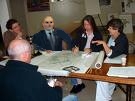 small downtown retailers, restauranteurs, lawyers, and financiers.
small downtown retailers, restauranteurs, lawyers, and financiers.
SATURDAY - Part 1:
CONSULTANT'S BRIEFING
 The morning briefing by Goody Clancy consultants, and their associates, summarized the team's research findings, and downtown market issues, as they assessed them.
The morning briefing by Goody Clancy consultants, and their associates, summarized the team's research findings, and downtown market issues, as they assessed them.

 Suggesting that available downtown Wichita office quarters were not sufficiently attractive to major corporations and professional firms, Goody Clancy staff emphasized a need for new "Class A" (top-quality) office space to supplement the diminishing existing stock.
Suggesting that available downtown Wichita office quarters were not sufficiently attractive to major corporations and professional firms, Goody Clancy staff emphasized a need for new "Class A" (top-quality) office space to supplement the diminishing existing stock.
 Hotels, too, were on their list of recommendations -- the consultants reporting a "demand" for 250-400 new hotel rooms in downtown. They described hotels as typical development "anchors" on primary streets in downtown areas.
Hotels, too, were on their list of recommendations -- the consultants reporting a "demand" for 250-400 new hotel rooms in downtown. They described hotels as typical development "anchors" on primary streets in downtown areas.


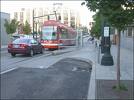 showing ways to better integrate pedestrian, bicycle, bus and car traffic -- urging a more even distribution of traffic between these modes.
showing ways to better integrate pedestrian, bicycle, bus and car traffic -- urging a more even distribution of traffic between these modes.

 But the Goody Clancy team urged much more -- saying that the time had come for Wichita to abandon its hub-and-spoke bus system for a more effective "corridor-based" system that provides "quicker, more direct routes."
But the Goody Clancy team urged much more -- saying that the time had come for Wichita to abandon its hub-and-spoke bus system for a more effective "corridor-based" system that provides "quicker, more direct routes."
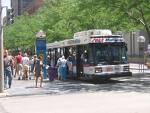 and on a shorter, sparser schedule Saturday, with no service at all on Sunday.)
and on a shorter, sparser schedule Saturday, with no service at all on Sunday.)
 To fund costly transit and trafficway improvements, the consultants suggested reviving the sales tax hike that had been so successful in funding the Intrust Bank Arena.
To fund costly transit and trafficway improvements, the consultants suggested reviving the sales tax hike that had been so successful in funding the Intrust Bank Arena.
SATURDAY - Part 2:
"SOLUTION-EERING"
 Feasability: Money Matters
Feasability: Money Matters

 was largely based on the tradition of local homeowners spending only the equivalent of 2-3 years' salary to buy a home;
the consultant advised thinking, instead, on the East-Coast practice of budgeting 3-4 years' salary for a home purchase -- making the high cost of new downtown apartments more justifiable.
was largely based on the tradition of local homeowners spending only the equivalent of 2-3 years' salary to buy a home;
the consultant advised thinking, instead, on the East-Coast practice of budgeting 3-4 years' salary for a home purchase -- making the high cost of new downtown apartments more justifiable.
 -- which underlies the current "mortgage meltdown," and the resulting national economic collapse, and "housing glut." He argued that the more conservative "Wichita model" is more economically realistic, viable and sustainable.
-- which underlies the current "mortgage meltdown," and the resulting national economic collapse, and "housing glut." He argued that the more conservative "Wichita model" is more economically realistic, viable and sustainable.
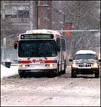

 SATURDAY - Part 3:
SATURDAY - Part 3:
DESIGN GROUPS
as the "main axis" of downtown,
as a unifying center
and transportation "spine."
-- retail, dining & parking.
integrating ground-floor art shops
with upper-floor "low-cost" housing.
between Arena and Century II,
for foot, bike & bus traffic (especially trolley).
(especially boating)
Exploration Place & the new Library
on river's West Bank, north of 2nd St.
around the government buildings area
(Central & Main), and around 2nd St.
 Several (as urged by the consultants) endorsed new hotels along the river, south of Century II, and some liked the idea of new riverfront offices.
Several (as urged by the consultants) endorsed new hotels along the river, south of Century II, and some liked the idea of new riverfront offices.
 One of the groups expanded on the transportation consultant's recommendations for "inter-modal" linking of personal transportation with mass transit. The group proposed making south-central downtown -- between Douglas and Kellogg -- into an "inter-modal traffic hub" for all of downtown.
One of the groups expanded on the transportation consultant's recommendations for "inter-modal" linking of personal transportation with mass transit. The group proposed making south-central downtown -- between Douglas and Kellogg -- into an "inter-modal traffic hub" for all of downtown.
 lined with retail shops and restaurants, to make the area an attractive destination, as well as a waypoint.
lined with retail shops and restaurants, to make the area an attractive destination, as well as a waypoint.
OTHER SURVEYS
 To ascertain public tastes, consultants posted arrays of photos of other downtown developments from around the nation, and handed out blue and yellow stickers, inviting participants to use their stickers to tag the images they found most appealing for Wichita.
To ascertain public tastes, consultants posted arrays of photos of other downtown developments from around the nation, and handed out blue and yellow stickers, inviting participants to use their stickers to tag the images they found most appealing for Wichita.
 For a more sophisticated polling technique, the consultants passed out hundreds of tiny "polling sensors" -- tiny keypads resembling pocket calculators -- that transmitted users' number-selections to a central computer by radio waves.
For a more sophisticated polling technique, the consultants passed out hundreds of tiny "polling sensors" -- tiny keypads resembling pocket calculators -- that transmitted users' number-selections to a central computer by radio waves.
THE NEXT STEP
The Wichita Eagle, Sunday, Feb.28, 2010:
"Group of Wichitans helps create downtown's future,"
and:
Goody Clancy, consultants,
& Wichita Downtown Development Corp.,
Feb., 2010:
"Downtown Master Plan: Unveiling the Findings"
the HEART of OUR City!
Get involved, and shape it!
PHOTOS
(click to enlarge)
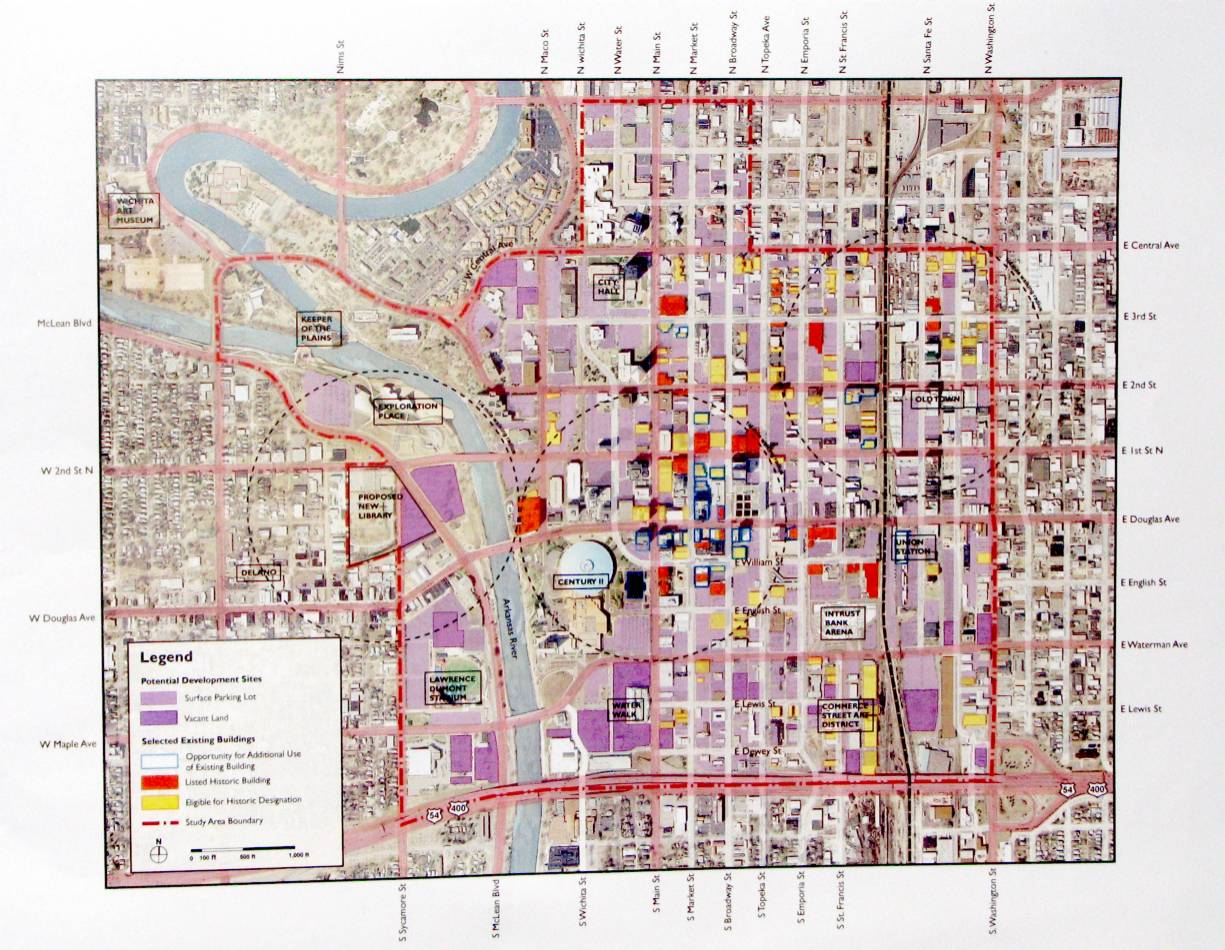
The downtown planning map. Dark purple is vacant land, light purple is parking. Orange-red are officially "historic" buildings, allowing "historic preservation" funds, with regulatory strings. Yellow buildings are eligible for "historic" status. Blue-outlined buildings have "potential" for "additional use."

Downtown development map marked up by "Group 2" -- showing "green-space" improvements along the river, along with yellow apartment buildings, and a magenta hotel. Blue office buildings sprout along 2nd street, while a south-downtown "transportation hub" area -- with parking, mass transit, bikeways, walkways and streets -- connects Kellogg traffic, Century II, and the Arena area (circled in red to note recommended retail/dining development).
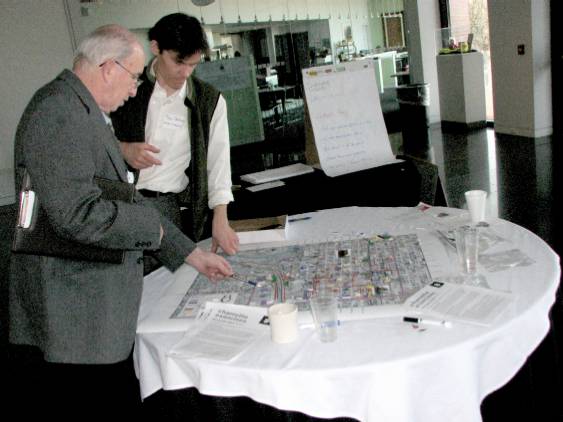
A property owner conferrs with a young Goody Clancy consultant over property in the downtown area, pointing to a map marked up by one of the "citizen" groups.
|
|
|
|
|
|
|
|
|
|
|
|
|
|
|
|
|
|
|
|
|
|
|
|
|
|
|
|
|
Background |
|
|
|
|
